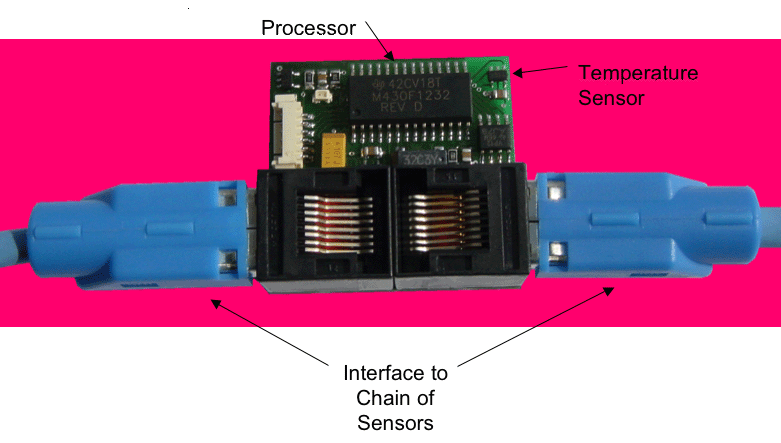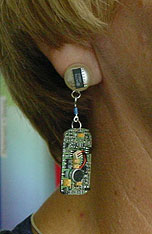Terena Networking Conference
|
Table of contents |
||
|
Geant2: A very different kind of network |
||
How to build larger nets |
||
GEANT2: A very different kind of networkDai Davis said: The technology used by the Internet today will not work for larger nets than those using 10 GB/second building blocks. A new technology is needed. There is a risk of losing more packets, and that the network will not degrade gracefully when highly loaded, unless correctly managed. |
||
Understanding the risks: Is safe computing possible? |
||
Robert Cowles,
|
||
Grid computing |
||
Ralph Niederberger: The DEISA Project – Network Operation and Support - First ExperiencesStrong, tight coupling of large supercomputers, to enable new scientific applications. They will promote cluster software, global file systems, load balancing between supercomputers on a European scale. Latency (turn-around-time) is a problem, solved by having a dedicated network, so that firewalls are not needed. But then he talked about the need of high-speed firewalls, so apparently dedicated networks was not enough, because all people who wanted to use the services did not have access to the dedicated network. Ariel Oleksiak: Unified Access to Grid InfrastructuresGrids provide environment for collaboration and advanced computations, but should be transparent and easy to use, even if they are heterogeneous. Also from mobile devices. |
||
Security |
||
John Larmouth: Biometrics StandardisationBDB = Biometric Data Block. Lots of people have their own proposal for a new biometric measurement which they think is the best of all for identification. There are lots of working groups on biometric standardization. Lots of people come to these meetings. There are between 29 and 40 standards under development in this area. BMB provides meta-data for the classification of biometric measurements. There are also security issues of delivery of these blocks. Fingerprints are either stored as simple pictures, or as logical description of the whorls and ridges, since people could not agree, they developed two standards. Similar for faces, iris images, vascular image, hand geometry, signature. People want more and more standards, believe that more is better. Related is capturing of biometric data, processing to extract features, storage, matching. There is also a need for a low-level interface between biometric measurement equipment. There is also, of course, conformance testing and certification entrees, as part of the biometrics area and APIs. There is a need to identify trusted software, distribute digital certificates, etc. Privacy concerns: Anything that has the potential of detecting a medical condition. Another issue is e-authentication across a network. Torgny Hallenmark: Control Spam by Use of Greylisting90-95 % of all spam was stopped, without having to make any decisions on what is spam or not spam. Just one small change had a large effect. Method: Check IP address, sender, recipient. If this triplet has not been seen before, send SMTP 451 failure code. Accept the same message if it comes back more than 5 minutes later. Regular SMTP senders can resend in this case, spam senders cannot. Attributes:
Some odd SMTP senders which cannot handle this have to be whitelisted explicitly. But why not fix those servers instead? Example: Some mobile phone operators. Problems:
Question from the audience: Why have spammers not adjusted to this yet? Jose-Marcio Martins Da Cruz: SPAM Filtering on Huge Mail Servers with j-chkmailThis paper was also about greylisting, and how to manage a large data base to control when to greylist. Greylisting can be improved by some other information handling, such as restricting the number of connects from a certain mail server during a certain time period. |
||
Sensor Networks: |
||
Jochen Schiller, Free University of Berlin98% of all computers in the future will be embedded, not immediately visible as computers to their users. Such nets will create information, which may need to be compiled. |
||

|
Examples:
Measures information, sometimes influences information. Self-charging batteries, robust technology, self-healing networks. Crashes are not acceptable. Not a replacement for fast fixed networks, but complementing this with simple, cheap monitoring devices. Those nodes which have ample power serve as relayers, this should be automatically managed. Extreme future: Intelligent "dust". |
Networking within the law |
Andrew Charlesworth: Copyright Strategies in the Networked EnvironmentWhen the radio came, the music industry complained that now people won't buy any records again. The actual result was the opposite. When the tape recorder came, they said the same. "Fair use" is being reduced. Important:
Marko Bonac: Rules for registration of names under the .eu TLDwww.euric.eu will give a list of registrars. You have to register an owner e-mail address. If this address does not work, you may lose your domain name. At the beginning, a four-month time will be open for those who have prior rights to register their domains. After that, a first-come method of distributing domain names will be followed. Sunrise period: phase 1: Only government agencies and holders of trademarks. Phase 2. Other rights protected under national law. An additional fee will be charged during the sunrise period. For more info, see http://www.eurid.eu/. |
Transport protocol |
Doug Leith: Fair & useful comparisons: how should we evaluate new TCP proposals ?At very high speeds, existing congestion control tool can lead to problems. There are a range of proposals to extend TCP, there is a need to evaluate them and see which are best. None of the sources are aware of the available bandwidth. When queues of packets are full, should the tail or the front of the queue be dropped? Reports of drops can provide feedback to the sender that the network is overloaded. But these reports can come too late, it might be better if the sender got knowledge of congestion before packets begin to be dropped. Important is the factor α of how the window size is increased when a drop is observed. Live experiments are expensive and time-consuming. Can a model replace experiments? Measures must be made on a range of different bandwidths, propagation speeds and queue sizes. Bartosz Belter: Performance Assessment of Distributed SAN SystemsHow to integrate remote, separated HPC centers in a single, distributed scalable performance system? Problem is that different centers use different technologies. Some vendors have special effects, like "write acceleration" from Cisco, which influences writing but not reading. |
Plugging in the nervous system |
Kevin Warwick: Plugging the Human Nervous System into the Network: Experiments and Possibilities with Brain-computer InterfacesHumans are pretty limited beings, with limited sensors, connecting to networks could give us new understandings of the world. And it would be very nice to be able to do searches and computations as fast as computers can do. Via the network we can have sensors at remote places. Much research has been with connecting different kinds of animals, like fish or rats, to computers, but the same thing could be done with humans. Four out of six rats could learn that just thinking of pulling the lever could give them sugar, without actually pulling it. But two rats continued to pull the physical lever. Rats have been connected to computers, so that the computer tells the rat to go left and right and do other things. Example of uses: Defusing bombs without risking the life of humans. Current uses: Helping disabled people. The artificial arm can be controlled by movements in other muscles, and these movements are converted to movements of the artificial arm. So there is no direct connection from the brain to the artificial arm. Can be either output: Sending signals from brain to external devices, or input: Getting external signals to fire up nerves. Existing applications:
Think of the world before the invention of the telephone, to understand what changes will happen in the future, he said. |

 Typical: Low power,
low volume for each device, but large volume together. The cost for the
end units should be low.
Typical: Low power,
low volume for each device, but large volume together. The cost for the
end units should be low.